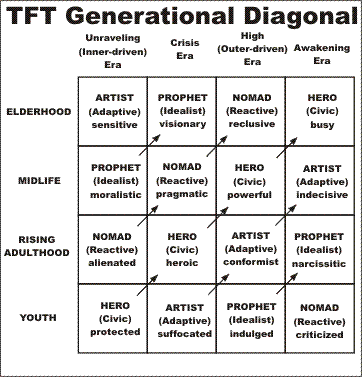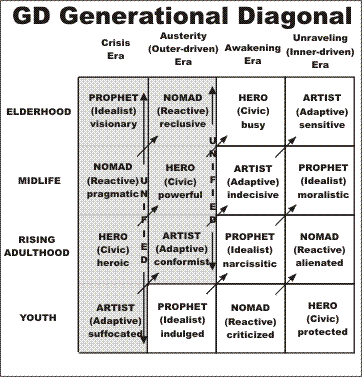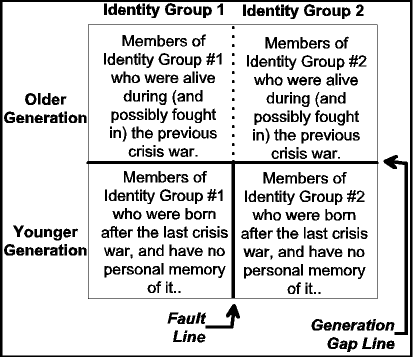> It is extremely difficult to reconcile these dates with any theory
> that uses generational archetypes. In colonial America in the 18th
> century, the life expectancy of someone who reached age 20 was
> about 35 years (total of 55).
> link:
http://www.econ.utah.edu/maloney/1740f03n2.html
> Your turning dates are seriously problematic. Here's the math:
> For your Prophet generation, a middle-cohort Prophet would be born
> around 1685. Add 55 years to get 1740. The majority of people born
> in the middle of the High who reahced adulthood would be dead
> fully 35 years before the start of the Revolution. Almost none of
> them would be alive to see it.
> For your Nomad generation, a middle-cohort Nomad would be born
> around 1702 meaning most of them would be dead by 1757, some 18
> years before the Revolution began.
> For your Hero generation, a middle-cohort would be born 1738, with
> most of them dead by 1793. Now this is more reasonable. However, I
> must note that since your Hero generation is so huge, it is quite
> probable that a grandchild would be the same generation as a
> grandparent. In fact, in your dates, Benjamin Franklin goes from
> an early-wave Prophet (S&H) to a late-wave Nomad! Samuel Adams
> goes from a late-wave Prophet (S&H) to an early-wave Hero!
> The way the life expectancies work out, close to 80% of the adult
> population of the colonies would have been Heroes in 1775. The
> only way this problem can be fixed is if your generation dates
> bear no correspondence to your turning dates -- in which case it
> is difficult to see how you can call your theory Generational
> Dynamics.
> A better name for your theory would seem to be the Tragedy Amnesia
> theory -- for it seems to rely on the fading memory of previous
> violence. For some reason the memory of violence seems to fade
> faster in some turnings than in others. There is no apparent
> mechanism for why some populations in the same culture are
> radically more amnesiac than others. You have an 11-year High and
> a 50-year unravelling occurring in the same saeculum. How could
> any society so quickly progress through one stage and then
> languish in another stage for decades?
Originally Posted by John J. Xenakis
Originally Posted by Mike Alexander '59





